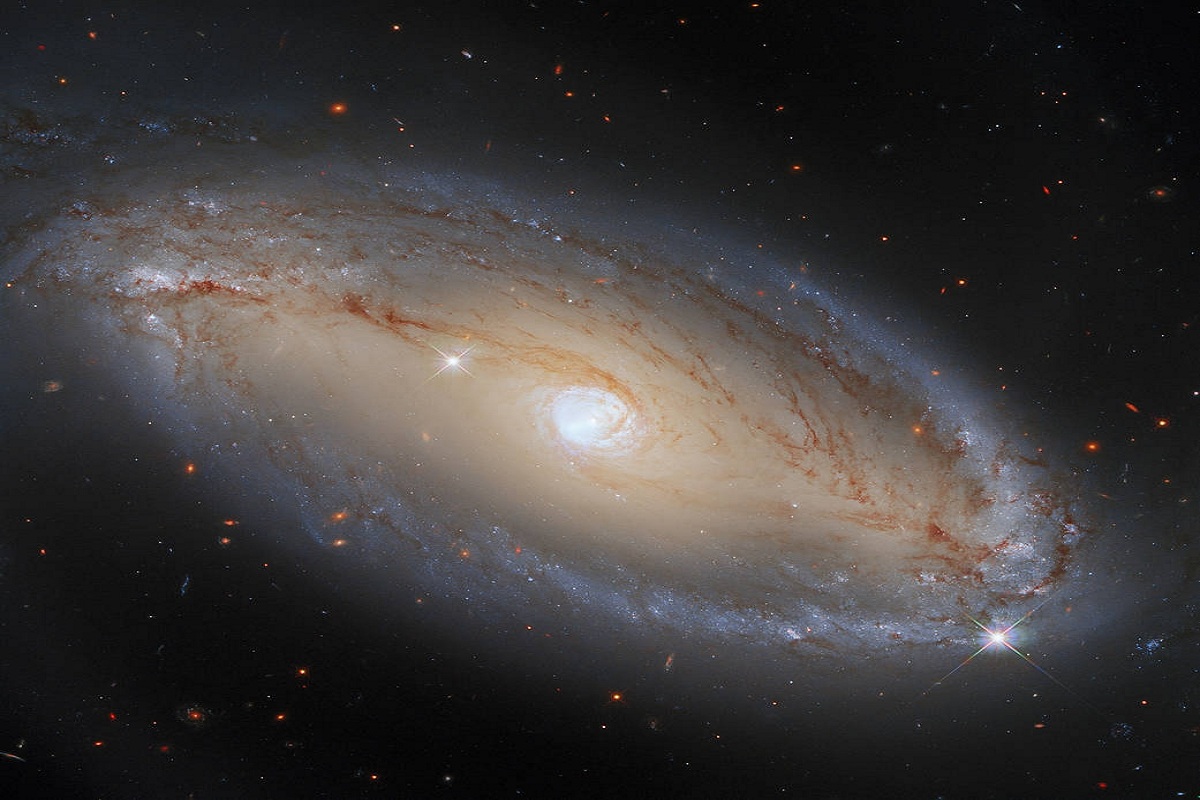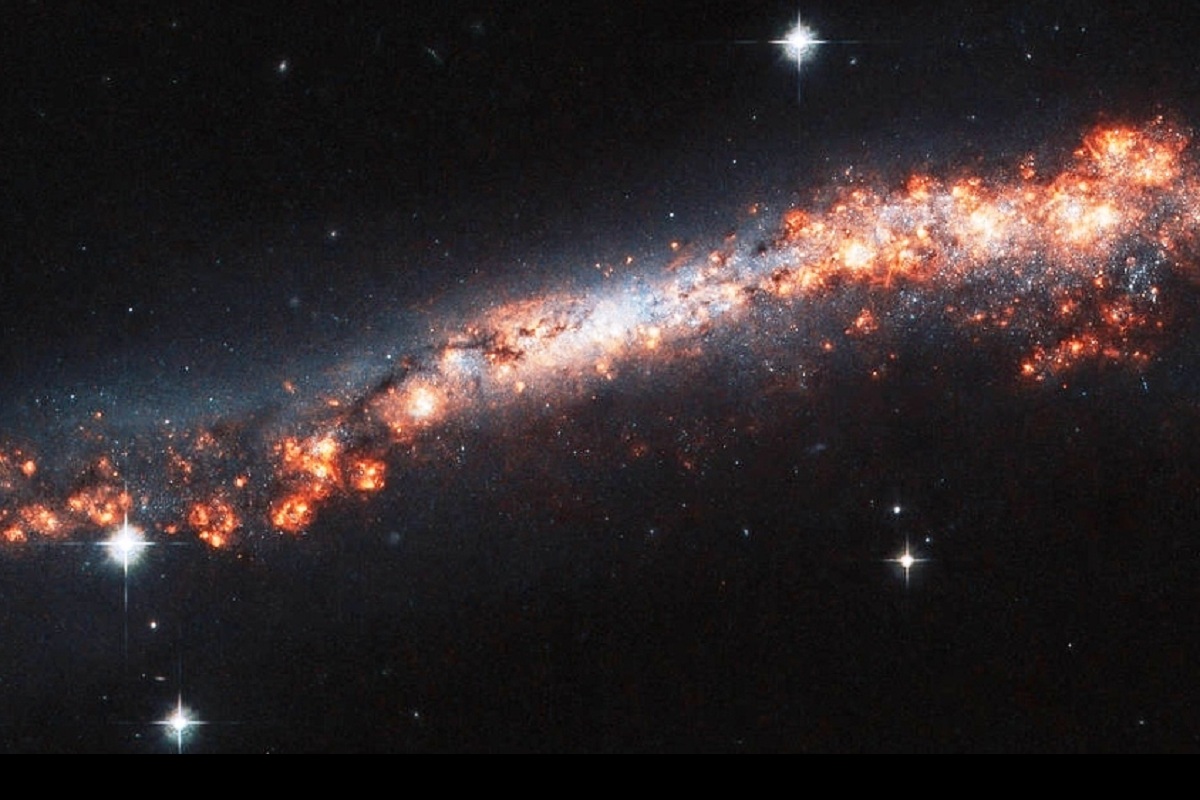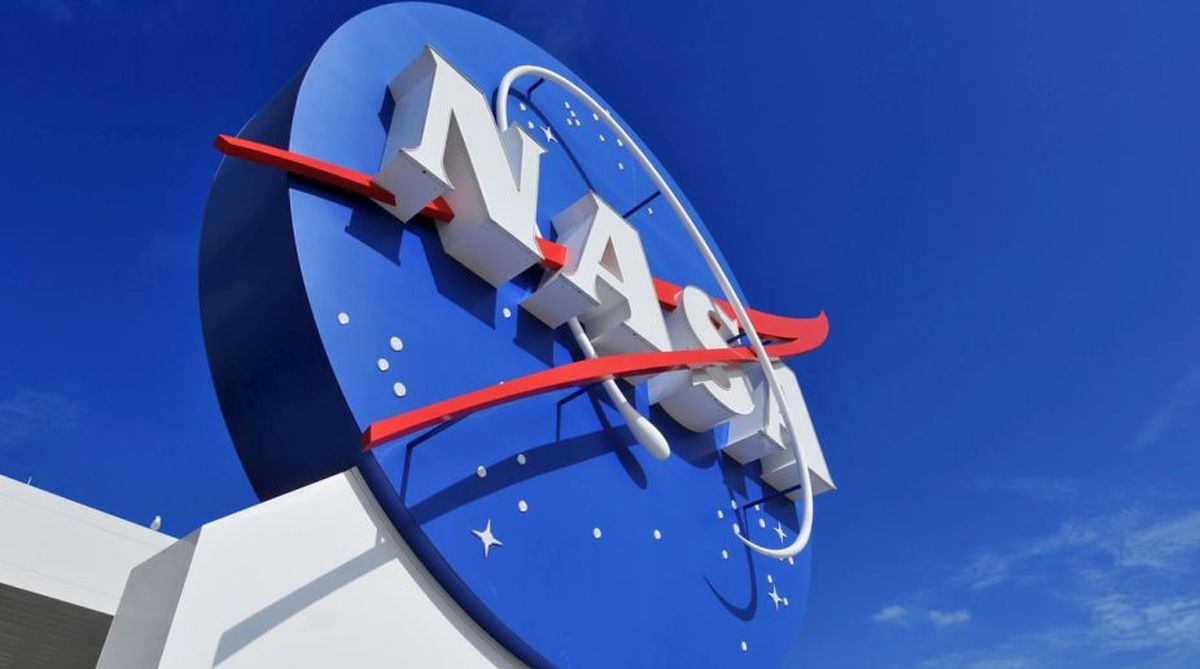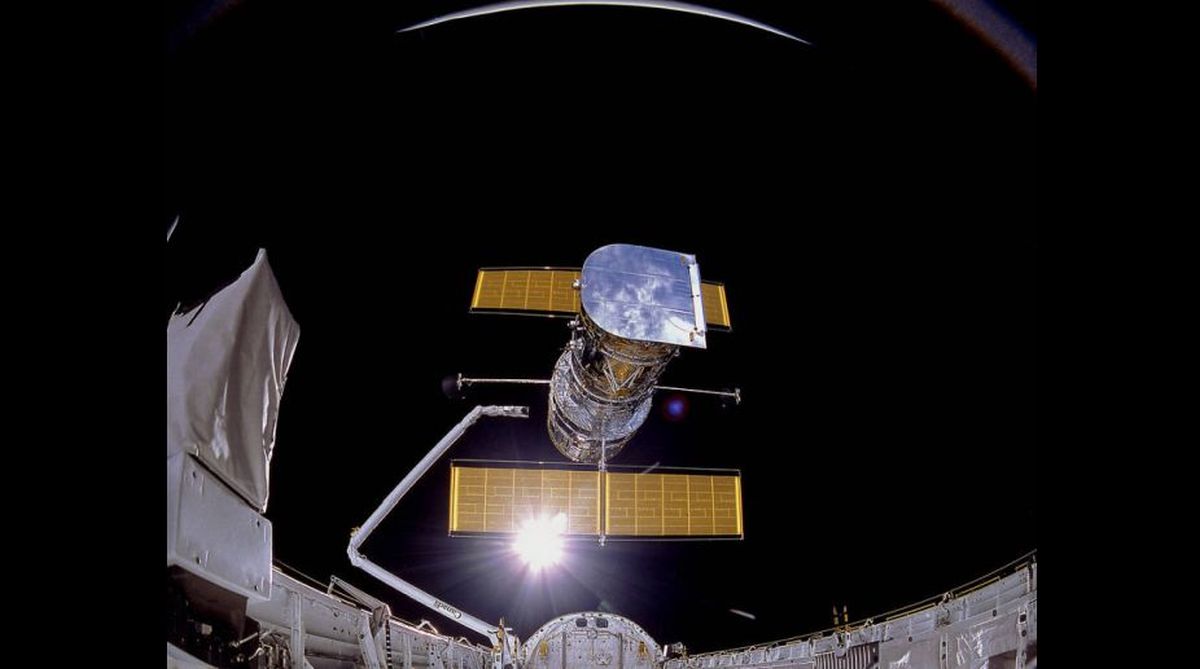Hubble Telescope detects spiral galaxy with celestial eye
Hubble's Wide Field Camera 3 (WFC3) captured the galaxy -- NCG 5728 -- which appears to be elegant and luminous, an ESA statement said.

Hubble's Wide Field Camera 3 (WFC3) captured the galaxy -- NCG 5728 -- which appears to be elegant and luminous, an ESA statement said.

The image showcased a remote galaxy that is greatly magnified and distorted by the effects of gravitationally warped space.

The galaxy called AUDFs01 was discovered by a team of astronomers led by Dr Kanak Saha from the Inter-University Centre for Astronomy and Astrophysics (IUCAA) Pune.

"In its 15 years of operations, Spitzer has opened our eyes to new ways of viewing the universe," said Paul Hertz, director of the Astrophysics Division.

The image straddles the gap between the very distant galaxies, which can only be viewed in infrared light, and closer galaxies.
The Hubble Space Telescope has captured the image of a planetary nebula that looks like a colourful holiday ornament in…
Astronomers using NASA's Hubble Space Telescope have discovered a first-of-its-kind compact yet massive, disk-shaped 'dead' galaxy that stopped making stars…
Jupiter has been captured in unprecedented detail in this new image released by Nasa. The photograph, taken by the Hubble…
The last meal that the supermassive black hole of the Milky Way had was six million years ago, when it…
NASA's Hubble Space Telescope has captured a "shadow play" caused by a possible planet that is moving counterclockwise around a…